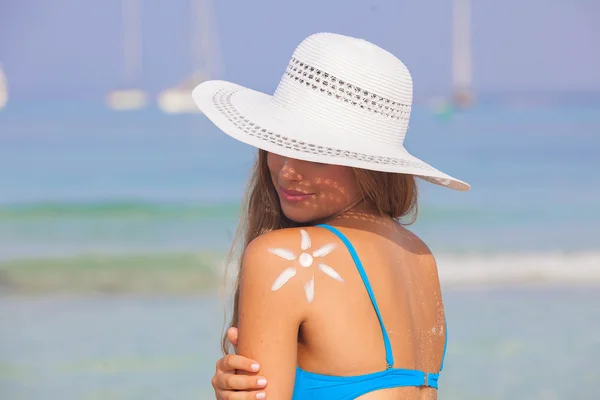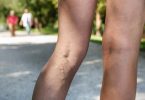Everyone needs to spend time outdoors to be physically active, reduce stress, and have some sun exposure to produce vitamin D, which increases calcium absorption for stronger and healthier bones. However, unprotected exposure to the sun’s ultraviolet (UV) rays can damage the skin and eyes and weaken the immune system.
Sun energy reaches the earth as visible, infrared, and ultraviolet (UV) rays. Ultraviolet (UV) includes ultraviolet A (UVA), which has long wavelengths and easily penetrates the earth’s atmosphere as 95% of it reaches the earth, and ultraviolet B (UVB), which has shorter wavelengths and only 5% can go through the atmosphere and reach the earth.
The atmosphere’s ozone layer is responsible for protecting the earth from UV, and its thickness determines how much UV goes through it; as the thickness decreases, the UV intensity increases, like in spring.
Exposure to UV is affected by other factors such as:
- Time of the day: the UV radiation reaches its peak at noon
- Season: as the sun’s angle varies, the UV intensity also differs
- Location: it plays a significant role in UV exposure; with higher latitude, the UV intensity increase as it reaches its strongest index at the equator
Additionally, UV is harmful in any season; for example, in winter, snow reflects 85% of UV radiation, increasing the exposure to it. Any surface reflection such as water, sand, or concrete contributes to the increased exposure. This article lists some tips to be safe all year to prevent damage from harmful UV rays.
1. Understand the risk factors for harmful effects of UV radiation
When it comes to UV radiation, no one is safe; light and dark skin people are at risk of sunburn, skin cancer, and other harmful effects of UV exposure. Therefore dermatologists recommend routine skin checks and scheduling an appointment to evaluate any new, unusual, changing, or symptomatic growths.
However, some people are more vulnerable compared to others due to having less melanin in their skin, the natural protective shield that absorbs UV radiation and protects the skin. Therefore, if you have pale skin, blue eyes, or blond or red hair, be extra careful with the shiny sun.
Also, For those who recovered from skin cancer, or being treated for, or have a family history of skin cancer, be sure to check with dermatologists regularly and have all the necessary precautions when going out.
2. Wear sunglasses that block UV rays
Skin and eyes are affected by UV radiation, especially with the sunlight reflecting off from the surfaces, such as snow, water, etc. Overexposure to UV can cause cataracts or even eye cancer. So be protected with style; wear sunglasses but not low-quality or dark-tented ones
Go for high-quality sunglasses, such as polarized or blue blockers, which provide real UV protection. Look for sunglasses with a “100% UV protection” label, and when possible, oversized large wrap-around sunglasses would be an excellent choice to prevent harmful rays from sneaking in from the sides.
3. Seek shade always
The natural defense tactic to reduce sun damage is reducing exposure time and planning outdoor activities, if possible, to be done out of time when the sun is the strongest, typically between 10 a.m to 4 p.m. It may vary depending on location.
When going out, seek shades to have some relief from the sun during those intense hours; shad can be under a tree or an umbrella on a café patio. UV radiation intensity can be measured quickly by the “Shadow rule” check the shadow; if it’s shorter than you, the UV rays are the strongest, and protection is required.
4. Protect your skin with clothing
Covering up when there are no shades around or exposure to UV radiation during peak hours is a must. When possible, loose-fitting protective UV clothes will protect the skin, as they’re made of tightly woven fabric.
However, when they’re unavailable, simply wearing long-sleeved shirts, long pants, or long skirts will do the trick. Also, dry clothes provide better protection than wet ones, and darker colors are more protective than light-colored clothing.
5. Use sunscreen
It’s the defensive layer everyone needs; sunscreen protects the skin in various ways, either by absorbing, scattering, or reflecting the UV radiations, especially when used with other protections.
Sunscreen isn’t only for sunny beaches or tanning beside the pool; it must be applied every day before going outside. UV radiation will be there, even on cloudy or snowy days. However, not all sunscreen effectively protects the skin from sunburn, skin cancer, or skin aging, so check the sunscreen features before getting it. To get the most sunscreen protection, apply the recommended amount evenly to all uncovered skin, especially lips, face, hands, and feet.
6. Read the Labels
Not all sunscreen is effective with sun UV rays, so read the label before buying. The first thing to check is the sun protection factor (SPF), which is a relative measurement of the time the sunscreen will protect the skin from the sunburning rays UVB; most sunscreens absorb the UVA.
In other words, the SPF factor shows the level of protection against UVB. For example, SPF 30 protects for 30 minutes. A higher SPF means a higher UVB protection; SPF 15 blocks 93% of UVB rays, SPF 30 blocks 97%, and SPF 100 blocks 99%.
Pro tip: Dermatologists recommend sunscreen SPF to be 30 or higher. And keep in mind that no sunscreen can provide 100% UVB protection.
Also, ensure that the sunscreen has broad spectrum protection against both UVA and UVB sun rays, and it is recommended to be water resistant too. Don’t forget the expiration date; the sunscreen also expires!
7. Wear a hat
Clothing will protect the skin it covers, leaving the head exposed, and wearing a hat will protect it, as well as the face, scalp, ears, and neck. Hats come in different types, from baseball caps to hats with brims all around that offer protective shades.
It’s recommended to avoid hats with holes and instead use hats with tightly woven fabric such as canvas. Also, avoid straw hats with holes that let the sun’s UV rays sneak in; darker hats can provide more protection.
Conclusion
Sun exposure is unavoidable, and solar UV radiation can cause many harmful effects on the skin, from superficial sunburns to skin cancer. So, to avoid those damaging effects, make sure to adopt the listed above sun safety tips in your daily routine, make sure to stay in the shade, avoid outdoor activities as much as possible during the peak sunlight hours, apply sunscreen and wear proper clothes, hat, and sunglasses to be protected against sunlight.
Author’s Bio:
Isabelle Marinier is an associate editor at EyeBuyDirect, an online retailer of affordable and high-quality eyewear. She is a lifelong learner who is always eager to try new things. Isabelle combines her skills and experience to transform lifestyle, fashion, and travel ideals into practical reality and relevant information.








